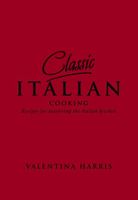🔥 Try our grilling cookbooks and save 25% on ckbk membership with code BBQ25 🔥
The Pressing
Published 2008
The very first pressing, which constitutes a tiny quantity and is created without any pressure being exerted on the olives, is called Il fiore, the flower, and is usually kept by the producer for home use! For the next pressing, a little pressure is applied, and the resulting oil is then checked for oleic acidity level. If the oil shows an acidity level between zero and 1 percent, it is considered qualified for the name extra virgin. The next pressing is slightly more heavy handed and the resulting oil should retain an oleic acidity level of between 1 and 5 percent. This oil is then qualified for virgin olive oil. At this point the olives need to be pressed very hard to extract whatever is left and the result has a much higher oleic acidity level and can only be called olive oil. A final pressing actually grinds the stones of the olives themselves, and the resulting oil, called pomace in England and sansa in Italian, is the oil which was used to light the street lamps throughout Italy before the invention of electricity. As a comestible, it is actually corrosive, and should therefore be avoided for cooking and eating purposes at all costs!
Become a Premium Member to access this page
Unlimited, ad-free access to hundreds of the world’s best cookbooks
Over 160,000 recipes with thousands more added every month
Recommended by leading chefs and food writers
Powerful search filters to match your tastes
Create collections and add reviews or private notes to any recipe
Swipe to browse each cookbook from cover-to-cover
Manage your subscription via the My Membership page
Part of
Advertisement
Related Recipes
-
-
-
-
Related Reference
-
-
-
-
Advertisement



